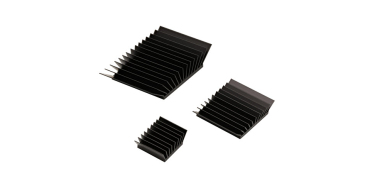Heat Sink Applications & Uses | Ohmite Mfg Co
In the realm of electronics, managing heat is a critical consideration for ensuring optimal performance and reliability of components. In applications where electronic devices generate significant amounts of heat, the use of heatsinks becomes essential. Let's dive into some common applications that may require the use of heatsinks to dissipate heat effectively.
Common Applications That May Require the Use of Heatsinks
Power Electronics
Power electronic devices such as transistors, diodes, and voltage regulators are ubiquitous in applications ranging from power supplies to motor drives. These components often operate at high currents and voltages, resulting in substantial heat generation. Heatsinks are employed to provide a thermal pathway for heat dissipation, preventing overheating and ensuring reliable operation of power electronics.
LED Lighting
Light Emitting Diodes (LEDs) have revolutionized the lighting industry due to their energy efficiency and longevity. However, LEDs are sensitive to heat, and excessive heat can degrade their performance and lifespan. Heatsinks are commonly used in LED lighting fixtures to dissipate heat generated by the LEDs, maintaining optimal operating temperatures and prolonging the lifespan of the luminaires.
Computer Systems
Modern computer systems, including CPUs, GPUs, and power regulators, generate significant heat during operation.
Heatsinks, often accompanied by fans in active cooling systems, are employed to dissipate heat and maintain acceptable operating temperatures. Overclocking enthusiasts and gaming enthusiasts frequently utilize larger and more efficient heatsinks to enhance thermal performance and overclocking potential.
Automotive Electronics
Automotive electronics operate in harsh environments characterized by high temperatures, vibration, and dust.
Components such as power electronics, engine control units, and LED lighting systems require effective thermal management to ensure reliability and longevity. Heatsinks are integrated into automotive electronic modules to dissipate heat and maintain optimal operating conditions, especially in powertrain and lighting applications.
Industrial Machinery
Industrial machinery, including motor drives, robotics, and manufacturing equipment, often operates in demanding environments with high ambient temperatures and heavy loads. Components such as power semiconductors, motor controllers, and servo drives require efficient heat dissipation to prevent thermal runaway and component failure. Heatsinks play a crucial role in industrial electronics by providing thermal management and ensuring continuous operation under challenging conditions.
Audio Amplifiers
Audio amplifiers, whether used in home audio systems, professional sound equipment, or automotive audio systems, can generate substantial heat, especially at higher power levels. Heatsinks are essential for dissipating heat generated by power transistors or integrated circuits (ICs), preventing thermal distortion and ensuring reliable audio performance.
In conclusion, heatsinks are indispensable components in various electronic applications where heat dissipation is crucial for maintaining performance, reliability, and longevity. Whether it's in power electronics, LED lighting, computer systems, automotive electronics, industrial machinery, or audio amplifiers, the effective use of heatsinks plays a vital role in ensuring the optimal operation of electronic devices in diverse environments.

Types of Heat Sinks
In the realm of industrial electronics, effective thermal management is paramount for ensuring the reliability and longevity of electronic components. Call now!
Read More
Selecting a Heat Sink
Heatsinks are indispensable components in electronic systems, playing a vital role in dissipating excess heat generated by electronic devices. Call now!
Read More